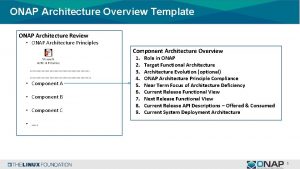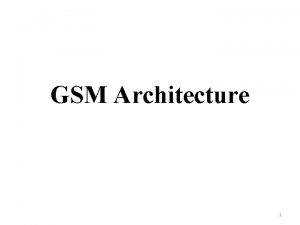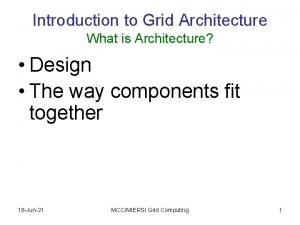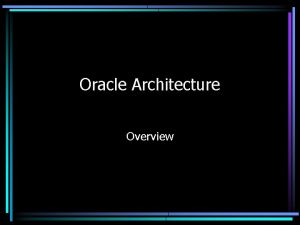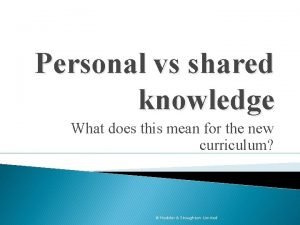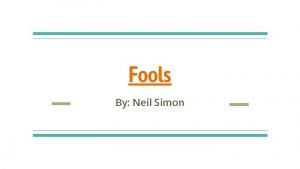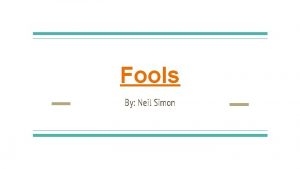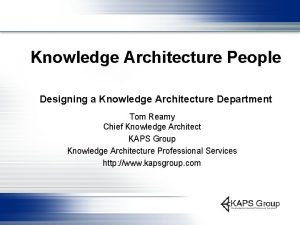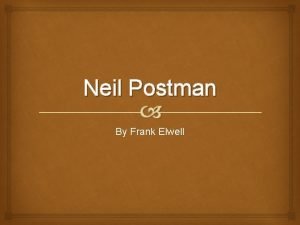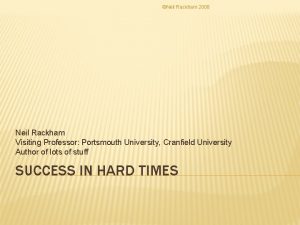PNDS Architecture an overview Neil Smith knowledge integration
















- Slides: 16

PNDS Architecture - an overview Neil Smith knowledge integration ltd © 2005 knowledge integration ltd www. k-int. com

What is it? • Single interface allowing access to multiple content types: – – – Cultural Sector (esp. Sense of Place) e. Goverment Community Information Learning Resources Ready-Reference • Extensible and Adaptable © 2005 knowledge integration ltd www. k-int. com

Multiple Levels of Integration • Shallow – e. Government • Deep – Seamless. UK – Sense of Place Projects © 2005 knowledge integration ltd www. k-int. com

How does it work? • 3 major components: – Search / Discovery Subsystem – Repository Subsystem – Web Application © 2005 knowledge integration ltd www. k-int. com

High Level Architecture (user perspective) © 2005 knowledge integration ltd www. k-int. com

Search Protocols © 2005 knowledge integration ltd www. k-int. com

Local Repository © 2005 knowledge integration ltd www. k-int. com

How do I make my resources available to the PNDS? 2 Main Options: • Harvesting metadata into the Repository – OAI-PMH • ‘Live’ Cross – Searching – Z 39. 50 – SRU/W – Other protocols by negotiation …. © 2005 knowledge integration ltd www. k-int. com

Searching – Pros & Cons • Pro: – Ensures very latest results are returned – Resource owner determines what is searchable – No storage overhead on gateway • Con: – Can slow overall performance – Relies on good connectivity – Places unknown performance overhead on your server. © 2005 knowledge integration ltd www. k-int. com

Harvesting – Pros & Cons • Pro: – Better search performance for end users – Efficient & resilient use of network bandwidth (after initial data load) – Potential for re-indexing on gateway • Con: – Not live - users search a ‘snapshot’ of the resource – Issues over what gets harvested – metadata, thumbnails, resources … © 2005 knowledge integration ltd www. k-int. com

Recommendation o All Cultural Sector Contributors should make their resources available to PNDS via OAI-PMH unless either: • A search interface has already been implemented Or • The collection is extremely volatile with availability changing throughout the day © 2005 knowledge integration ltd www. k-int. com

Issues to be addressed • How do I implement OAI-PMH? • What gets harvested? • How do I describe my resources? – Metadata Schema – Controlled Vocabularies • How do I describe my collection? – Service Registries © 2005 knowledge integration ltd www. k-int. com

What might it look like? © 2005 knowledge integration ltd www. k-int. com

© 2005 knowledge integration ltd www. k-int. com

© 2005 knowledge integration ltd www. k-int. com

© 2005 knowledge integration ltd www. k-int. com
 Knowledge creation and knowledge architecture
Knowledge creation and knowledge architecture Onap architecture
Onap architecture Stylistic overview of philippine art
Stylistic overview of philippine art Omc in gsm
Omc in gsm Overview of grid architecture
Overview of grid architecture Overview of oracle architecture
Overview of oracle architecture Three dimensions of corporate strategy
Three dimensions of corporate strategy Forward backward integration
Forward backward integration Integration
Integration What is shared knowledge
What is shared knowledge Knowledge shared is knowledge squared meaning
Knowledge shared is knowledge squared meaning Knowledge shared is knowledge multiplied meaning
Knowledge shared is knowledge multiplied meaning Contoh shallow knowledge dan deep knowledge
Contoh shallow knowledge dan deep knowledge Posteriori vs priori
Posteriori vs priori Book smart vs street smart
Book smart vs street smart Knowledge claim
Knowledge claim Gertler econ
Gertler econ

